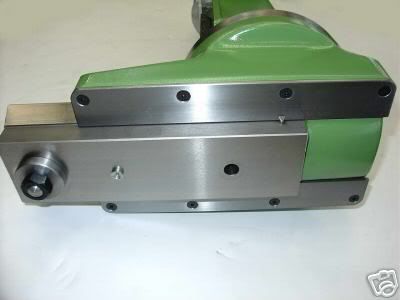Perfect timing on this thread, I too was about to ask advice on machine painting.
Got 3 machines I would like to disassemble and repaint.
How do the big boys paint the machines, i.e. DMG,Weiler,Schaublin,Mikron and the rest..
I tend to like the non glossy finish.
What about powder coating?
Is there a good book anyone can recommend on this topic?
I want to do it methodically,slow and through and only after I have researched the topic ad-nauseum

. I would like to remove the old paint to bare metal.
Anyone know what method the top professional machine rebuilders/restorers use?
How about the method for old paint removal? I have plenty of time so if it takes a tooth brush and 2 months to remove old paint, then thats waht I'll do

I want to use the least harsh but effective method.Concerned about removing and or scoring the base metal.
Wouldn't some type of spray method produce the most even/best results

, with the spraying done in many light coats instead of 1 or 2 thick coats?
Is machine painting similar to car painting?



 . I would like to remove the old paint to bare metal.
. I would like to remove the old paint to bare metal. I want to use the least harsh but effective method.Concerned about removing and or scoring the base metal.
I want to use the least harsh but effective method.Concerned about removing and or scoring the base metal. , with the spraying done in many light coats instead of 1 or 2 thick coats?
, with the spraying done in many light coats instead of 1 or 2 thick coats?